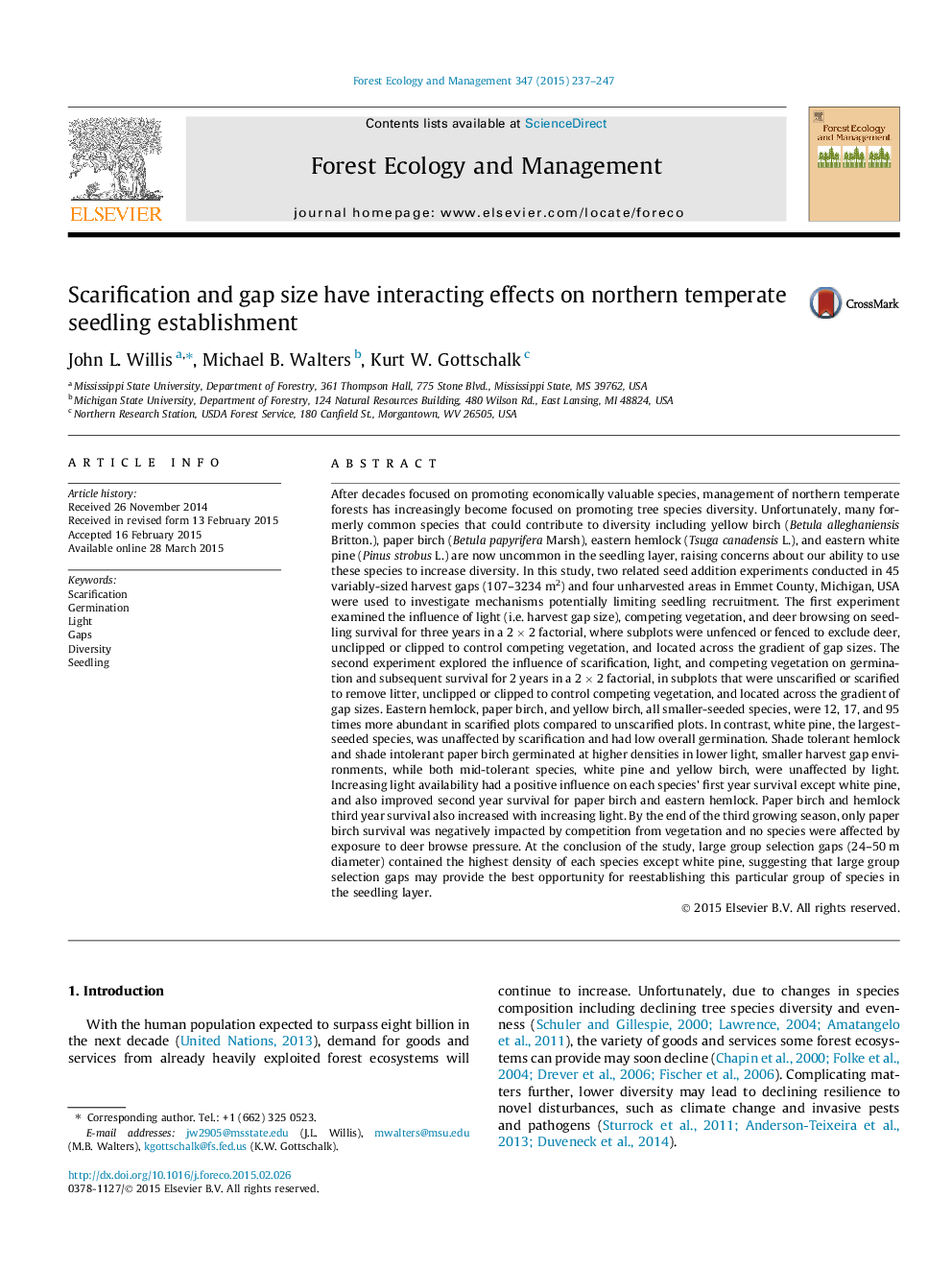| کد مقاله | کد نشریه | سال انتشار | مقاله انگلیسی | نسخه تمام متن |
|---|---|---|---|---|
| 86262 | 159174 | 2015 | 11 صفحه PDF | دانلود رایگان |
• We investigated four declining species’ germination and early seedling survival.
• Scarification was critically important for smaller seeded species germination.
• Low light availability was not an important constraint on germination.
• Seedling survival generally improved with increasing light availability.
• Competing vegetation is beginning to have a negative effect on seedling survival.
After decades focused on promoting economically valuable species, management of northern temperate forests has increasingly become focused on promoting tree species diversity. Unfortunately, many formerly common species that could contribute to diversity including yellow birch (Betula alleghaniensis Britton.), paper birch (Betula papyrifera Marsh), eastern hemlock (Tsuga canadensis L.), and eastern white pine (Pinus strobus L.) are now uncommon in the seedling layer, raising concerns about our ability to use these species to increase diversity. In this study, two related seed addition experiments conducted in 45 variably-sized harvest gaps (107–3234 m2) and four unharvested areas in Emmet County, Michigan, USA were used to investigate mechanisms potentially limiting seedling recruitment. The first experiment examined the influence of light (i.e. harvest gap size), competing vegetation, and deer browsing on seedling survival for three years in a 2 × 2 factorial, where subplots were unfenced or fenced to exclude deer, unclipped or clipped to control competing vegetation, and located across the gradient of gap sizes. The second experiment explored the influence of scarification, light, and competing vegetation on germination and subsequent survival for 2 years in a 2 × 2 factorial, in subplots that were unscarified or scarified to remove litter, unclipped or clipped to control competing vegetation, and located across the gradient of gap sizes. Eastern hemlock, paper birch, and yellow birch, all smaller-seeded species, were 12, 17, and 95 times more abundant in scarified plots compared to unscarified plots. In contrast, white pine, the largest-seeded species, was unaffected by scarification and had low overall germination. Shade tolerant hemlock and shade intolerant paper birch germinated at higher densities in lower light, smaller harvest gap environments, while both mid-tolerant species, white pine and yellow birch, were unaffected by light. Increasing light availability had a positive influence on each species’ first year survival except white pine, and also improved second year survival for paper birch and eastern hemlock. Paper birch and hemlock third year survival also increased with increasing light. By the end of the third growing season, only paper birch survival was negatively impacted by competition from vegetation and no species were affected by exposure to deer browse pressure. At the conclusion of the study, large group selection gaps (24–50 m diameter) contained the highest density of each species except white pine, suggesting that large group selection gaps may provide the best opportunity for reestablishing this particular group of species in the seedling layer.
Journal: Forest Ecology and Management - Volume 347, 1 July 2015, Pages 237–247
